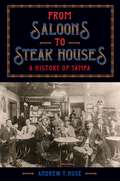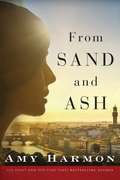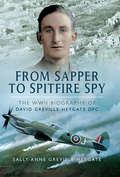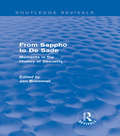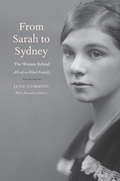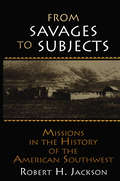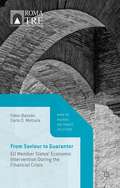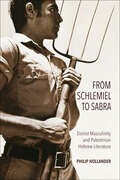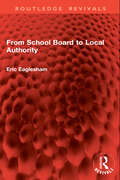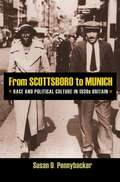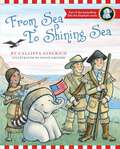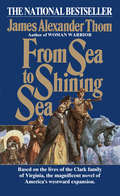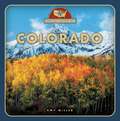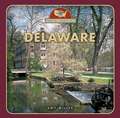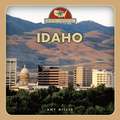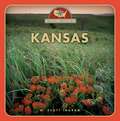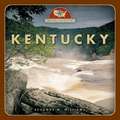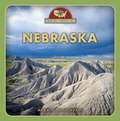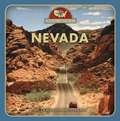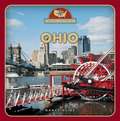- Table View
- List View
From Saloons to Steak Houses: A History of Tampa
by Andrew T. HuseSince its early days as a boomtown on the Florida frontier, Tampa has had a lively history rich with commerce, cuisine, and working-class communities. In From Saloons to Steak Houses, Andrew Huse takes readers on a journey into historic bars, theaters, gambling halls, soup kitchens, clubs, and restaurants, telling the story of Tampa’s past through these fascinating social spaces—many of which can’t be found in official histories. Beginning with the founding of modern Tampa in 1887 and spanning a century, Huse delves into the culture of the city and traces the struggles that have played out in public spaces. He describes temperance advocates who crusaded against saloons and breweries, cigar workers on strike who depended on soup houses for survival, and civil rights activists who staged sit-ins at lunch counters. These stories are set amid themes such as the emergence of Tampa’s criminal underworld, the rise of anti-German fear during World War I, and the heady power of prosperity and tourism in the 1950s. Huse draws from local newspaper stories and firsthand accounts to show what authorities and city residents saw and believed about these establishments and the people who frequented them. This unique take on Tampa history reveals a spirited city at work and play, an important cultural hub that continues to both celebrate and come to terms with its many legacies.
From Sand and Ash
by Amy HarmonItaly, 1943-Germany occupies much of the country, placing the Jewish population in grave danger during World War II. As children, Eva Rosselli and Angelo Bianco were raised like family but divided by circumstance and religion. As the years go by, the two find themselves falling in love. But the church calls to Angelo and, despite his deep feelings for Eva, he chooses the priesthood. Now, more than a decade later, Angelo is a Catholic priest and Eva is a woman with nowhere to turn. With the Gestapo closing in, Angelo hides Eva within the walls of a convent, where Eva discovers she is just one of many Jews being sheltered by the Catholic Church. But Eva can't quietly hide, waiting for deliverance, while Angelo risks everything to keep her safe. With the world at war and so many in need, Angelo and Eva face trial after trial, choice after agonizing choice, until fate and fortune finally collide, leaving them with the most difficult decision of all.
From Sapper to Spitfire Spy: The WWII Biography of David Greville-Heygate DFC
by Sally-Anne Greville HeygateDavid Greville-Heygate was one of the few men who served in both the army and the Royal Air Force during the Second World War, but it was in the sky that he really earned his stripes. Stalking the skies flying photo-reconnaissance missions with No. 16 Squadron over Northern France, he was to win the illustrious and highly coveted Distinguished Flying Cross (DFC). Another highlight saw him in action in the skies above the French coastline in preparation for the D-Day landings, taking photographs that would provide the allies with essential intelligence upon which to base their plans. Based in Holland in December 1944, David flew armed recces with No.168 Squadron then transferred to No.2 Squadron where he reported on troop movements behind German lines. During the course of a dynamic and eventful career, he flew a wide variety of iconic wartime aircraft including Lysanders, Mustangs, Typhoons and Spitfires in England, the Netherlands and Germany.Although there have been many stories about the Battle of Britain there has been less published about the life of a photo reconnaissance pilot during this time. David's thrilling exploits in the sky and the part he played within the context of the wider war are enlivened here to great effect by his daughter, Sally-Anne Greville Heygate, herself a professional photographer. Using snippets from diary entries, letters, logbooks, squadron records and other documents, she has managed to construct an engaging history of a talented photo-reconnaissance pilot and the war in which he fought.
From Sappho to De Sade: Moments in the History of Sexuality (Routledge Revivals)
by Jan BremmerThe history of sexuality has been the subject of increased interest in recent years and more widely acknowledged importance in the interpretation of past mentalités. Yet historians have only recently begun to study sexual practices in any depth, establishing that sexuality is not a biological constant but an ever-changing phenomenon, continuously shaped by people themselves. The contributors to this inter-disciplinary collection bring their expertise in ancient as well as medieval history, anthropology, modern history, and psychology to bear upon the history of sexuality. They explore various aspects of sexuality in successive periods: pederasty and lesbian love in antiquity, incest in the Middle Ages, sexual education during the Dutch Republic, voyeurism in the rococo, prostitution in Vienna around 1900, and the invention of sexology. From Sappho to De Sade, first published in 1989, offers an informative and entertaining collection of essays for students of cultural anthropology, social history and gender studies.
From Sarah to Sydney: The Woman Behind All-of-a-Kind Family
by June Cummins Alexandra DunietzThe untold life story of All-of-a-Kind Family author Sydney Taylor, highlighting her dramatic influence on American children&’s literature"Delv[es] deeply into historical context, including Jewish immigrant experiences. . . . An uncommonly intimate portrait. . . . Deeply empathetic."—Elissa Gershowitz, Horn Book This is the first and only biography of Sydney Taylor (1904–1978), author of the award-winning All-of-a-Kind Family series of books, the first juvenile novels published by a mainstream publisher to feature Jewish children characters. The family—based on Taylor&’s own as a child—includes five sisters, each two years apart, dressed alike by their fastidious immigrant mother so they all look the same: all-of-a-kind. The four other sisters&’ names were the same in the books as in their real lives; only the real-life Sarah changed hers to the boyish Sydney while she was in high school. Cummins elucidates the deep connections between the progressive Taylor&’s books and American Jewish experiences, arguing that Taylor was deeply influential in the development of national Jewish identity. This biography conveys the vital importance of children&’s books in the transmission of Jewish culture and the preservation of ethnic heritage.
From Savages to Subjects: Missions in the History of the American Southwest (Latin American Realities Ser.)
by Robert H. JacksonIncorporating recent findings by leading Southwest scholars as well as original research, this book takes a fresh new look at the history of Spanish missions in northern Mexico/the American Southwest during the 17th and 18th centuries. Far from a record of heroic missionaries, steadfast soldiers, and colonial administrators, it examines the experiences of the natives brought to live on the missions, and the ways in which the mission program attempted to change just about every aspect of indigenous life. Emphasizing the effect of the missions on native populations, demographic patterns, economics, and socio-cultural change, this path-breaking work fills a major gap in the history of the Southwest.
From Saviour to Guarantor: EU Member States' Economic Intervention During the Financial Crisis (ROMA TRE Business And Finance Collection)
by Fabio Bassan Carlo D. MotturaFrom Saviour to Guarantor.
From Schlemiel to Sabra: Zionist Masculinity and Palestinian Hebrew Literature (Perspectives On Israel Studies)
by Philip Hollander“Convincingly demonstrates the role of gender and sexuality in forming the Israeli state and . . . the place of literature as a force in politics.” —ChoiceIn From Schlemiel to Sabra, Philip Hollander examines how masculine ideals and images of the New Hebrew man shaped the Israeli state. In this innovative book, Hollander uncovers the complex relationship that Jews had with masculinity, interrogating narratives depicting masculinity in the new state as a transition from weak, feminized schlemiels to robust, muscular, and rugged Israelis. Turning to key literary texts by S.Y. Agnon, Y.H. Brenner, L.A. Arieli, and Aharon Reuveni, Hollander reveals how gender and sexuality were intertwined to promote a specific Zionist political agenda.A Zionist masculinity grounded in military prowess could not only protect the new state but also ensure its procreative needs and future. Self-awareness, physical power, fierce loyalty to the state and devotion to the land, humility, and nurture of the young were essential qualities that needed to be cultivated in migrants to the state. By turning to the early literature of Zionist Palestine, Hollander shows how Jews strove to construct a better Jewish future.
From Schlemiel to Sabra: Zionist Masculinity and Palestinian Hebrew Literature (Perspectives On Israel Studies)
by Philip Hollander“Convincingly demonstrates the role of gender and sexuality in forming the Israeli state and . . . the place of literature as a force in politics.” —ChoiceIn From Schlemiel to Sabra, Philip Hollander examines how masculine ideals and images of the New Hebrew man shaped the Israeli state. In this innovative book, Hollander uncovers the complex relationship that Jews had with masculinity, interrogating narratives depicting masculinity in the new state as a transition from weak, feminized schlemiels to robust, muscular, and rugged Israelis. Turning to key literary texts by S.Y. Agnon, Y.H. Brenner, L.A. Arieli, and Aharon Reuveni, Hollander reveals how gender and sexuality were intertwined to promote a specific Zionist political agenda.A Zionist masculinity grounded in military prowess could not only protect the new state but also ensure its procreative needs and future. Self-awareness, physical power, fierce loyalty to the state and devotion to the land, humility, and nurture of the young were essential qualities that needed to be cultivated in migrants to the state. By turning to the early literature of Zionist Palestine, Hollander shows how Jews strove to construct a better Jewish future.
From School Board to Local Authority (Routledge Revivals)
by Eric EagleshamFirst published in 1956, From School Board to Local Authority is a meticulous and exact inquiry into the events which led up to the famous Cockerton v. The School Board for London case. It suggests that the reorganization of the education system in 1902 was not primarily the result of an unexpected legal decision in 'Cockerton Judgement' rather was the outcome of a deliberate policy evolved by Morant and Gorst aimed at ending the administrative confusion which then existed. The book is based mainly on the material found on the files of the Education Department, the Science and Art Department, and the Local Government Board. It further reveals the administrative confusion and jealousies of these Departments, shown as conflicts about Higher Grade Schools, Secondary Schools, Organized Science Schools, and Evening Schools.
From Scottsboro to Munich: Race and Political Culture in 1930s Britain
by Susan D. PennybackerPresenting a portrait of engaged, activist lives in the 1930s, From Scottsboro to Munich follows a global network of individuals and organizations that posed challenges to the racism and colonialism of the era. Susan Pennybacker positions race at the center of the British, imperial, and transatlantic political culture of the 1930s--from Jim Crow, to imperial London, to the events leading to the Munich Crisis--offering a provocative new understanding of the conflicts, politics, and solidarities of the years leading to World War II. Pennybacker examines the British Scottsboro defense campaign, inaugurated after nine young African Americans were unjustly charged with raping two white women in Alabama in 1931. She explores the visit to Britain of Ada Wright, the mother of two of the defendants. Pennybacker also considers British responses to the Meerut Conspiracy Trial in India, the role that antislavery and refugee politics played in attempts to appease Hitler at Munich, and the work of key figures like Trinidadian George Padmore in opposing Jim Crow and anti-Semitism. Pennybacker uses a wide variety of archival materials drawn from Russian Comintern, Dutch, French, British, and American collections. Literary and biographical sources are complemented by rich photographic images. From Scottsboro to Munich sheds new light on the racial debates of the 1930s, the lives and achievements of committed activists and their supporters, and the political challenges that arose in the postwar years.Some images inside the book are unavailable due to digital copyright restrictions.
From Sea to Shining Sea
by Louis E. Wilson Christopher L. Salter Franklin Ng Gary B. Nash J. Jorge Klor de Alva Jacqueline M. Cordova Beverly J. Armento Karen K. WixsonYou're about to start an exciting journey around the world. You'll make this journey across maps and globes. The journey will first take you across the United States.
From Sea to Shining Sea
by Callista Gingrich Susan ArcieroEllis the Elephant is back and ready for another adventure in American history! In From Sea to Shining Sea, the fourth installment of Callista Gingrich’s New York Times bestselling series, Ellis explores the early years of the United States and heads west into uncharted territory with Lewis and Clark.In previous books, Sweet Land of Liberty, Land of the Pilgrims’ Pride, and Yankee Doodle Dandy, Ellis learned about pivotal moments that have shaped America. Now, in From Sea to Shining Sea, America’s favorite time-traveling pachyderm discovers a new and growing nation along with George Washington, Thomas Jefferson, Lewis and Clark, Sacagawea and others.Authored by Callista Gingrich and illustrated by Susan Arciero, From Sea to Shining Sea will delight those who want to know how brave Americans forged a growing nation and spread freedom from coast to coast.
From Sea to Shining Sea
by Peter Marshall David ManuelThis is a sequel in a sense to the Light and the Glory. You do not need to have read the first to enjoy this book. This book covers the years 1787-1837 in our nation's history.
From Sea to Shining Sea: A Novel
by James Alexander Thom"Splendid... Thom tells the story with humor and eloquence, and a thumping good tale it is, too." THE WASHINGTON POST. In one generation, the Clark family of Virginia fought for our nation's independence, and explored, conquered, and settled the continent from sea to shining sea. This powerfully written book recreates the warm life of the family, the dangers of the battlefield, the grueling journeys across an untamed wilderness, and the soul-stirring Lewis and Clark Expedition. This mighty epic is a fitting tribute to the wisdom and courage of Ann Rogers Clark, her husband John, and the ten sons and daughters they nurtured and inspired.
From Sea to Shining Sea: Colorado
by Amy MillerColorado is the eighth largest state in the country. All of the six New England states (Massachusetts, Connecticut, Maine, Vermont, New Hampshire, and Rhode Island) put together would fit inside Colorado's borders, with lots of room to spare. Early explorers from Mexico gave Colorado its name. It means "red-colored" in Spanish and was named after the Colorado River, which flows through red-colored rock called sandstone. Colorado's official nickname is the Centennial State because it became a state in 1876, when the United States celebrated the one hundredth anniversary, or centennial, of the Declaration of Independence.
From Sea to Shining Sea: Delaware
by Amy MillerFrom Sea to Shining Sea, Second Series puts you on the right track. Each title is your ticket for a tour of one of the states or territories of the United States.
From Sea to Shining Sea: Idaho
by Amy MillerIdaho is a great place for people who love the outdoors. Hikers and mountain climbers can explore majestic, rugged mountains, such as the Bighorn Crags and the Sawtooth Range. They can see the spectacular Shoshone Falls, which are even taller than the famous Niagara Falls. Fishermen and water-skiers enjoy Idaho's Coeur d'Alene Lake, one of the most beautiful lakes in the world. If you look at a map, you'll see that Idaho is a Rocky Mountain state in the northwestern part of the United States. It covers 83,570 square miles (216,446 square kilometers). That's an area bigger than all six New England states (Maine, Massachusetts, Rhode Island, Connecticut, New Hampshire, and Vermont), plus New Jersey and Delaware.
From Sea to Shining Sea: Illinois
by Dennis Brindell FradinAn introduction to the history, geography, important people, and interesting sites of Illinois.
From Sea to Shining Sea: Kansas
by W. Scott IngramRevised volume features new text, new sidebars, plus a time line and almanac of fast facts, and a gallery of famous people from Kansas.
From Sea to Shining Sea: Kentucky
by Suzanne M. WilliamsDescribes the geography, plants and animals, history, economy, language, culture and people of the state of Kentucky.
From Sea to Shining Sea: Nebraska
by Myra S. WeatherlyRevised volume features new text, new sidebars, plus a time line and almanac of fast facts, and a gallery of famous people from Nebraska.
From Sea to Shining Sea: Nevada
by Suzanne M. WilliamsRevised volume features new text, new sidebars, new photographs, new (and more) maps, plus a time line and almanac of fast facts, and a gallery of famous people from the state.
From Sea to Shining Sea: Ohio
by Nancy KlineFrom Sea to Shining Sea, Second Series puts you on the right track. Each title is your ticket for a tour of one of the states or territories of the United States.
From Sea to Shining Sea: The Story of America Volume 5
by Christopher Zehnder Catholic Schools Textbook Project StaffTraces the history of the United States, with emphasis on the contributions of the Catholic Church and its followers, from the discovery of the continent by Saint Brendan and later, the Vikings, to the beginning of the twentieth century.
